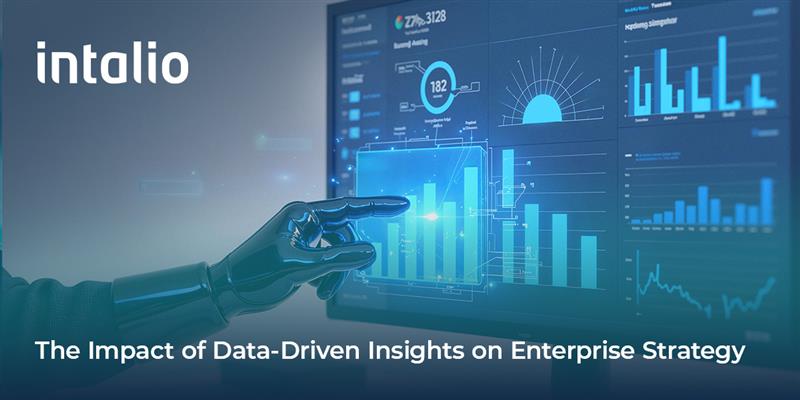Companies today don’t just compete on product or price—they compete on actionable, timely insights that emerge from data that’s been carefully structured, analyzed, and understood.
This shift has made data analytical systems and solutions central to how organizations think about strategy. Instead of relying solely on executive intuition or legacy patterns, businesses are using analytics software to detect real trends, anticipate risks, and make decisions with a higher degree of confidence.
To truly extract value from data, it’s not enough to collect more of it. The value comes from understanding what it’s saying and using that insight to guide the bigger picture.
Beyond the Dashboard: What Data-Driven Really Means
Plenty of businesses use data analytics tools in a basic way: weekly dashboards, quarterly reports, simple comparisons between forecast and actuals. These are useful, but they don’t tell the full story.
True data-driven strategy means using insight to guide direction—not just to explain past outcomes. To really reap the benefits of insights, it’s important to spot where a shift in behaviour is starting to happen, identifying which customer segments are reacting to pricing changes, or catching an operational bottleneck before it becomes a major issue.
This level of insight doesn’t happen automatically. It requires a culture that values data, teams that understand how to ask the right questions, and tools that can unify information from across the enterprise.
The Role of Analytics Software in Shaping Decisions
The quality of decisions made at the leadership level depends directly on the quality of the information available. With modern analytics software, companies can look beyond surface metrics and explore patterns across departments, time periods, and customer segments.
Consider a retailer noticing a drop in repeat purchases. Rather than launching a blanket discount campaign, a deeper look at their analytics might show that the drop is tied to a specific product category—one affected by supplier issues. That changes the response entirely.
Or take an enterprise managing hundreds of vendors. A strong data analytics tool for business might reveal that delays tend to spike during one particular phase of the procurement cycle. With this knowledge, the business can streamline that step, possibly even saving time and money without having to renegotiate supplier contracts.
The point is, these insights aren’t just interesting; they’re directional. They help organizations adjust course in meaningful, specific ways.
How Data Governance Supports Strategic Reliability
One of the most overlooked but critical components of data-driven strategy is trust. If teams don’t believe the data, they won’t use it. If they’re pulling numbers from different systems and getting different answers, they’ll go back to making decisions the old way that’s based purely on instinct.
This is where master data governance tools come in. They ensure that every department works from the same definitions, the same sources, and the same logic. When sales and finance run the same report and see the same result, alignment becomes easier.
Data governance also addresses questions of privacy, compliance, and traceability. Who changed this value? Why did a number spike last quarter? Can we prove this metric meets regulatory standards? A solid data governance layer makes these questions easier to answer, and that reliability feeds directly into the credibility of strategic plans.
Use Cases That Show Strategic Value
Not every insight has to lead to a major pivot. In many cases, small changes made consistently and with clarity deliver the greatest impact. Here are a few real-world examples:
- Resource Allocation: A professional services firm may use data to analyze project overruns to discover that projects with more than three stakeholder changes tend to miss deadlines. This leads to a new policy around client briefing and staffing that reduces late deliveries significantly.
- Product Road Mapping: A software company may notice through usage analytics that a rarely-promoted feature is gaining traction among enterprise clients. Rather than retiring it, they can decide to integrate it more deeply into the core product, leading to an uptick in renewals from that segment.
- Customer Retention: A telecom provider may identify that churn rates spike after unresolved tickets go beyond the 48-hour mark. They can then use this insight to rework their escalation process, adding an automated flag after 36 hours. This can result in a notable drop in customer loss.
These aren’t dramatic reinventions. They’re targeted, data-led refinements that add up to long-term strategic wins.
Challenges to Expect (and How to Tackle Them)
While the promise of data-driven insights is clear, the journey isn’t always smooth. Organizations often run into a few key issues:
- Data overload: More data doesn’t mean better insights. Teams need help filtering out the noise. Good analytics platforms offer ways to filter, prioritize, and contextualize data rather than dumping raw numbers on users.
- Siloed systems: If marketing, finance, and operations all use different platforms that don’t communicate, insights will stay partial. Integration across departments and tools that unify disparate data sources is essential.
- Low data literacy: Even with the best systems in place, insights won’t land if teams don’t know how to read them. This is where training and accessible dashboard design matter. When analytics tools are designed with the end user in mind, adoption increases.
Every one of these challenges can be addressed—not by technology alone, but by combining strong systems with leadership buy-in and cultural alignment.
Strategy Doesn’t Have to Be Based on Guesswork
Business strategy has always involved some level of uncertainty. But today, with the right systems in place, that uncertainty doesn’t have to dominate the process.
Data-driven insights aren’t about removing human judgment. They’re about giving decision-makers better inputs including clearer patterns, earlier warnings, stronger evidence. When those inputs are drawn from unified, governed data systems, the outcomes are consistently stronger.
Enterprise strategy thrives when it’s grounded in reality and that reality is best seen through well-managed, thoughtfully analyzed data. Book a demo today to see how Intalio helps businesses build data strategies they can trust.









